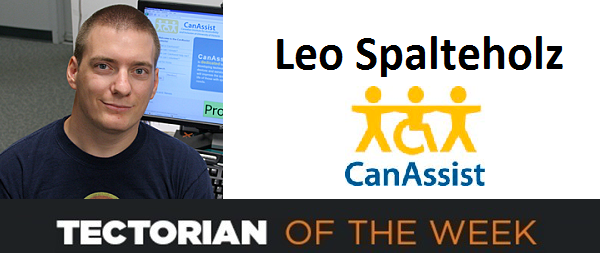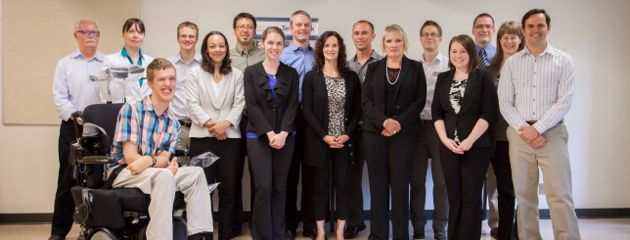Leo Spalteholz, engineering manager at CanAssist, is our Tectorian of the Week.
Leo has been involved with CanAssist since 2004, when he started as a volunteer (at the then-University of Victoria Assistive Technology Team writing an on-screen keyboard to be used with an eye tracking system.
Over the past decade, Leo has worked on and managed hundreds of projects for people with disabilities from simple equipment mounts to software apps for people with brain injuries and systems to prevent seniors with dementia from wandering.
“Leo has taught me a great deal not only about how technology can be created and deployed to truly open doors to the world and provide a person with barriers the ability to do that which they had previously never thought possible.” – Mike Shannon
These days, Leo manages the engineering team at CanAssist, developing assistive technology for people with disabilities.
“Leo has dedicated his engineering career to the assistance of those less fortunate: the disabled,” says Mike Shannon, another noted tireless cheerleader for Tectoria who now serves as Director of Operations and Business Development at CanAssist.
“Leo has taught me a great deal not only about how technology can be created and deployed to truly open doors to the world and provide a person with barriers the ability to do that which they had previously never thought possible,” says Mike. “He has a broad spectrum of interests and always brings a unique point of view to any discussion be it technical or philosophical.”
CanAssist – formerly the University of Victoria Assistive Technology Team (UVATT) – was established in 1999 by long-time Tectorian Dr. Nigel Livingston.
Dr. Livingston was introduced to the disability community after his daughter, Hannah, was diagnosed with Angelman syndrome.
During his interactions with health-care practitioners and those with disabilities, he discovered the great need for assistive technologies that could be customized to meet the sometimes highly specific challenges of individuals. Such devices were not readily available due to factors such as the complex challenges involved in developing them, the cost of production and the limited market for them.
UVATT was formed to address this need by making use of the outstanding resources at the University of Victoria.
UVATT’s first project dates back to 1999, when Dr. Livingston and a volunteer staff member developed a finger-activated switch to control a cassette player.
Their client was a young man who had suffered a near-drowning accident as a child. Then a resident at the Queen Alexandra Centre for Children’s Health, he was blind, unable to talk or walk, and only able to partially move one finger. The device created allowed the young man to turn his tape recorder on and off independently.
By 2003, UVATT was receiving about 75 requests from the community for assistive technologies annually.
By 2014, the organization had engaged almost 6,000 students, through co-op, graduate and work study placements, presentations, course instruction, overseas study programs and volunteer opportunities. Likewise, many members of UVic faculty have engaged in CanAssist activities over the years, in areas such as research, classroom instruction, requests for technology development and the ongoing sharing of ideas and expertise.
CanAssist still regularly responds to requests from individuals in the community, but in recent years has also provided customized technology solutions to a number of organizations.



Follow Us!